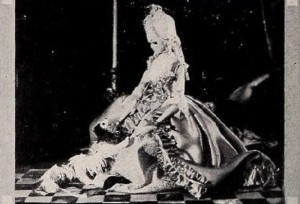
"In Traum Im Karneval, 1000 ft., 35mm., a distinctly new technique in cine puppet drama has been beautifully and conclusively demonstrated. Working with puppets free of distracting threads and controlled entirely from below the line of camera sight, Dr. Goldschmidt has brought to his film the fluidity and cinematic smoothness essential to a genuine photoplay. Gone are the proscenium arch and the unavoidably static feeling of photographed "theatre." Here the camera has moved freely from near shot to closeup or semicloseup as the action demands. Inserted scenes from real life, used with symbolism significant to the mood of the story, have served only to heighten the cinematic illusion, while the unusually graceful miming of the puppets amazes one with a feeling of uncanny and fantastic life. Traum Im Karneval is delicately conceived, sensitively directed and superbly photographed. Of brilliance equal to Dr. Goldschmidt's technique was the unfailing mastery of his collaborator, Richard Teschner, eminent European puppeteer." Movie Makers, Dec. 1931, 685.
"This was a very delightful 16mm subject that carried much entertainment value in addition to its good photographic quality." American Cinematographer, Dec. 1934, 377
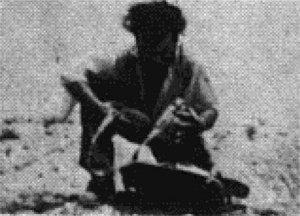
"The zest for gold can impose a hardship upon one so fortunate as to find the metal. The prospector in this film chose the desert for his search, and with success until he realized that he was lost and without water. Another prospector happened by with a canteen of water. In the desert, the price of water can be very great as this thirsty prospector learned to his chagrin" PSA Journal, Oct. 1962, 36.
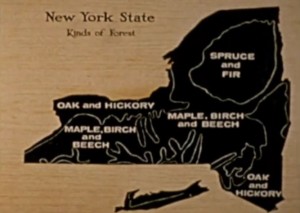
'This film presents a revelation of the beauty and colorful activity of the trees of New York State. Beautiful time-lapse pictures show the emerging buds, leaves, and flowerings on the trees. The identifying features on tree branches, flowers, fruit, and bark are shown, utilizing time-lapse photography to show the moving detail," via SUNY College of Environmental Science and Forestry.
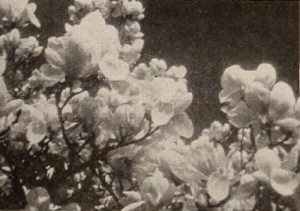
"It is spring in Brooklyn, and Leo J. Heffernan has found a multitude of trees there. He opens the film with a sombre shot of New York's waterfront and skyline, to indicate the tense activity of a large city. A title suggests that those who live in the midst of this turmoil can find solace not far away. The film proceeds to the bounteous display of flowering trees in a large public park. Glowing shots of heavily laden branches against blue sky are interspersed with scenes of Sunday strollers wandering through shaded walks and falling petals. Mr. Heffernan has used to good effect his fine technical skill, and his color transitions between scenes are smoothly accomplished. Trees That Grow in Brooklyn is accompanied by a rhymed narrative written especially for the film by Mr. Heffernan." Movie Makers, Dec. 1946, 489.
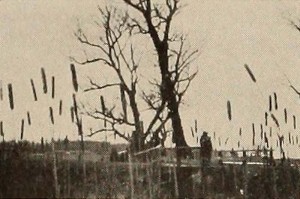
"In Trees, whose subtitle describes it as a picture poem, we find what is generally admitted to be the masterpiece of that superb artist of the cinema, the late Ripley W. Bugbee, whose work so delighted his fellow members of the Amateur Cinema League and whose untimely death took from amateur cinematography one of its finest workers. This film is the realization of what Movie Makers has often counseled — setting film to music, instead of the course usually followed in theatrical pictures of setting music to film. The footage is planned to gear in with the musical setting of Joyce Kilmer's popular verse, but, since that setting is brief, other music, excellently chosen, is added to the scoring. The music of the poem is played once orchestrally, then other selections are offered, and the presentation concludes with a baritone voice singing the musical setting through completely. In this last part of the film, there is admirable synchronism, the scenes illustrating the words very accurately. Within the framework of this mechanism, Mr. Bugbee placed some of the loveliest 16mm. Kodachrome footage that has ever been accomplished. The motion is all that of nature, no persons appearing, but that motion has tempo and rhythm, as well as amazing beauty. There are trees in all kinds of movement, and to them are added scenes of clouds, moving water, grasses, flowers and birds. Without the record accompaniment, one would find, in Trees, Kodachrome footage of the highest order; with the musical addition, there is something that, within its limited scope, has never been bettered." Movie Makers, Dec. 1938, 597, 617.
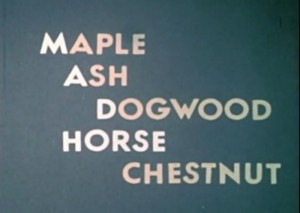
"This color film, released in partnership with the International Film Bureau Inc., presents the identifying features of trees as they change through the seasons. The bud and leaf scars of the deciduous broad-leaved trees are examined, as well as the distinguishing features of their bark. The cones and needles of the narrow-leaved evergreens are also described and compared. Extensive time-lapse photography shows the emergence of new leaves and flowers as spring arrives. Size, shape, and the arrangement of the buds and leaves on the twig are presented as ways of distinguishing and identifying trees, " via SUNY College of Environmental Science and Foresty.
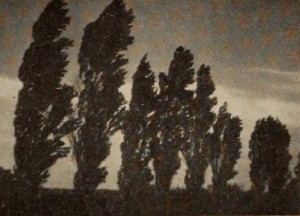
"In Trilogy, Timothy M. Lawler, jr., submits an interesting and, for the most part, successful effort to match romantic verse with appropriately emotional scenes. For his verse, Mr. Lawler has used Kilmer's Trees, Malay's The Wide World and Shelley's Love's Philosophy. The moods of the movie footage are excellent. The verse suffers a little, however, because it is released on the screen (or in narrative readings) a couplet at a time, at varying intervals, thus breaking into the overall rhythm. On the whole, however, Trilogy is a good approach to an attractive and difficult ideal." Movie Makers, Dec. 1949, 471.
Total Pages: 299